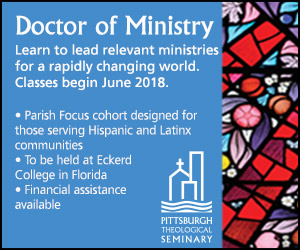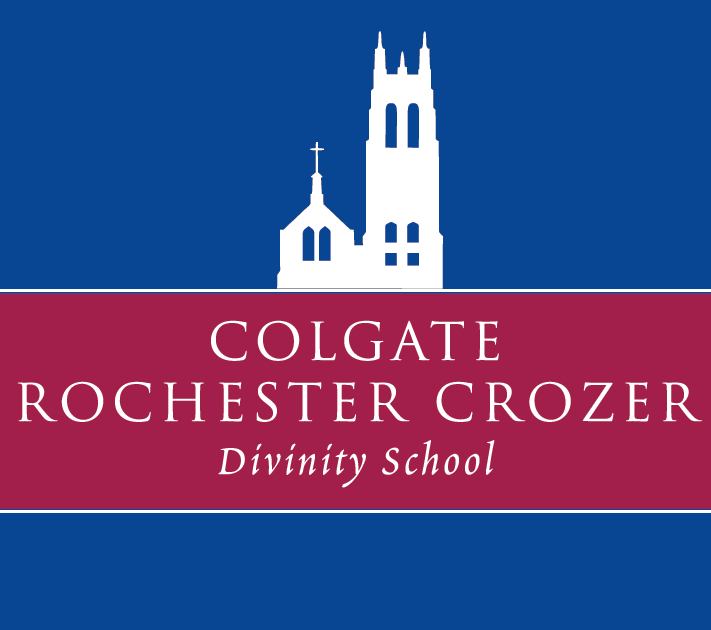By
The equilibrium of America remains jittery after a week of publicized bloodshed. The fertile streets of our nation were again watered by the blood of the slaughtered—Alton Sterling (of Baton Rouge), Philando Castile (of Falcon Heights) and five law enforcement officers (of Dallas).
Tragically, last week was not anomalous to what history reveals as normal in America. Last week was an American week. Not only are these tragedies familiar, there is the normalization of the experience and expression of Black rage. The poetic prophet, James Baldwin opined, “To be a Negro in this country and to be relatively conscious is to be in a rage almost all the time”. Black rage cannot be dwarfed to violent responses to white supremacy and state violence in America. We do a disservice to the history of our experiment in democracy when we de-contextualize and homogenize Black rage. Many American luminaries and posthumous American heroes embodied Black rage. Black rage has done exponentially more to cause America to live up to its founding creeds than it has exacted destruction.
As expected, the unblinking eye adjusted its focus from the everyday institutional violence—exemplified by but not limited to police brutality—to the tragic killing of five law enforcement officers. Though condemning the evil of Micah Johnson, and highlighting another mass shooting in America are warranted, the loss of police life does not silence a history of institutionalized destructive antagonism against Black bodies in America.
The de-contextualization of Black rage feeds white innocence, which circumvents any necessity to give an account of American terrorism. There exists in our nation a willful ignorance to—a tragically forged disremembering of—the violent social control of Black people.
Frederick Douglass proffered, “The thing worse than rebellion is the thing that causes rebellion”. The collective story of Blacks in America is a narrative of almost 400 years of dehumanization—trafficking Africans from their native land to America, chattel slavery that reduced Blacks to auctionable property, fugitive slave laws that preyed on all Blacks in America, Black codes and predatory sharecropping, Jim Crowism and redlining, unchecked vigilante lynching used as religious entertainment, the War on Drugs and mass incarceration, and stop-and-frisk and police terrorism.
While good hearts are duly broken and cold hearts are genuinely thawed by the assassination of five police officers in Dallas, the narrative of the systemic destruction of bodies of color has been derailed. Contrary to media spin and police anxiety, there is no systemic target against police in America.
If we are honest, we all know there is no mass institutionalized strategy or dedication of collective resources to killing police officers. The statistics alone bear this out: 42 cops died in the line of duty by gunfire in 2015 and around 50 died in 2014. However, there is unequivocal evidence—for those who are awake—that American systems and institutions are sabotaged against Black bodies.
The fear of Black rage in America is a form of social fantasy, a racist paranoia, because there is no historical precedent to fear the widespread mass killing of white people by Black people. However, there is a historical, quotidian frame of reference for Black, Brown, and poor people to fear police activity.
More frighteningly, local police officers pulled the triggers in Baton Rouge and elsewhere, but the logic of America loaded the guns. Ta-Nehisi Coates, in his bookBetween the World and Me, wrote to his son, “In America, it is traditional to destroy the black body—it is heritage”. This week we have been confronted with the melancholy truth that America breast-feeds its citizens on a heritage of hate—irrational, unwarranted disdain for the other. This other—against the limited template of white male heteronormativity—is almost always Black or Brown.
There is a “normative gaze” lensed by white supremacy—an ideal from which to order and compare human bodies—that renders Black freedom, creativity, power, protection, and decency a national impossibility. White supremacy is larger than individual acts of violence against non-white bodies. White supremacy is a logic that governs America, forges ways of thinking, and produces frameworks of meaning that suffocates the legitimacy of Black life.
Last week’s fatalities slap America and its faith communities out of a hard slumber and remind us that the proliferation of state-sponsored violence cannot be reduced to identifying and picking out a few bad apples. This is a matter of a tainted batch—systemic blind spots, racialized paranoia, and mass criminalization. Just to enumerate a fraction of the problem, Aiyana Stanley-Jones, Sean Bell, Mike Brown, Rekia Boyd, Freddy Gray, Kathryn Johnston, Eric Garner, Tamir Rice and Sandra Bland died due to deadly force or while wrongfully in the custody of police officers.
One by one, the American judicial system instantiates the claim that being tough on crime only means so-called Black crime and Brown Crime, but not blue crime. The practice of neither indicting nor convicting police officers in the killing of Black civilians suggests that these Americans deserved death sentences and are responsible for their own deaths—a new form of social suicide.
This is not a matter of police misconduct, but it is another example of police criminality—blue crime. It is worth noting that police misconduct occurs every day even when it does not result in fatality. Misconduct deserves administrative leave, suspended pay, and career termination, but criminality deserves jail time.
Police misconduct as a category of consequential behavior disregards the fact of the unnecessary destruction and de-sacralizing of human life, Black life. Without making this distinction, police officers, those that are professional murderers, will continue to commit fatal crimes against humanity and collect pensions. This is one of the things that shapes Black rage.
Black rage is not monolithic; just as Black people are not monolithic. Black rage is a counter-force to a white gaze that makes Black humanity invisible or a reality to be feared. Incarnated diversely, Black rage demands to be seen. Black rage ignited Amistad and David Walker, Nat Turner and Sojourner Truth, Marcus Garvey and Nannie Helen Burroughs, Huey P. Newton and Ella Baker, and N.W.A. and Kendrick Lamar.
America owes a great debt to Black rage. Black rage co-labored with the moving parts of the democratic process to add texture to the tapestry of American freedom. Black rage gave birth to the genius of coded spirituals such as “Swing Low, Sweet Chariot,” which sounded the horn of The Underground Railroad. Black rage mobilized Frederick Douglass to confront the northern elite with the question “What means the fourth of July to the Negro?” in the wake of the ratifying of the Fugitive Slave Act. Black rage led Henry McNeal Turner to admonish all to “Respect Black.” Black rage fed the spirit of Harriet Tubman as she navigated the woods of the antebellum south leading her people to a modicum of freedom. Black rage crafted the elocution and organizing of Martin Luther King Jr. from his anti-Vietnam War stance to his evolved position on the shortcomings of desegregation, “I’ve come to believe we’re integrating into a burning house”. Black rage raises a mirror to America and forces her to see the blemishes and wrinkles that compromise America the Beautiful.
When America does not see the humanity and sacredness of Black bodies, Black rage demands that Black bodies are seen—seen as human bodies. The incestuous relationship between poverty, failing public education, and rigged criminal justice makes black bodies invisible, literally removing human beings from the flow of society. The faces of black girls, boys, women and men are unrecognizable in the long shadows of low wages, state violence, and prison profiteering. In the tradition of Emmanuel Levinas, a prominent Jewish intellectual, we know God and encounter the face of God in the face of the other. This signifies that people are responsible to one another face-to-face. Understanding the face of the other as the face of God, the face demands us to do more and be more.
Similar to thousands of protesters who have used their bodies the past week to lift demands, my prophetic rage calls me to lift three demands:
- the mandatory appointment of special prosecutors to conduct grand jury hearings in cases of police activity that ends in fatalities. Along with the former, the institution of mandatory cultural competency and sensitivity training and psychological and personality screenings in police academies and in hiring and transfer policies for police;
- the abolition of mandatory minimum sentencing laws for nonviolent drug offenders, and reform in drug laws that treat addiction as criminal, instead of as medical in nature; and,
- the passing of national legislation such as the Fair Chance Act and the REDEEM Act that guarantee the basic human rights of formerly incarcerated persons.
The soul of America will not be redeemed by unearned Black suffering, but by unapologetic Black prophetic rage. The moral architects of America—people claimed by love and imagination—must guard against the deterioration of rage into nihilism. Rage must escort us by the heart to hope. This is prophetic rage, blues hope. Black Prophetic rage resists empire and creates the Beloved Community. Black rage, a form of prophecy, refuses to accept injustice as normal and invincible. Black rage now fuels a form of faithful activism committed to transforming the paralyzing and predatory policies that continue to plunder Black communities. If all of our lives are stitched together in a single garment of destiny, Black rage that saves Black life saves America.
Willie Dwayne Francois III serves as Senior Pastor of Mount Zion Baptist Church in Pleasantville, New Jersey (Atlantic City). He is a Phi Beta Kappa graduate of Morehouse College and holds a Master of Divinity from Harvard Divinity School. Francois’ pastoral activism takes shape around racial and economic justice and criminal justice reform. He is an adjunct instructor in African American Studies at the University of Houston and serves as co-chair of the Theological Working Group of the Black Church Center for Justice and Equality. For 2014-2015, Francois was named a Beatitudes Society Fellow, focusing on congregational responses to Mass Incarceration and empowering returning citizens.
















